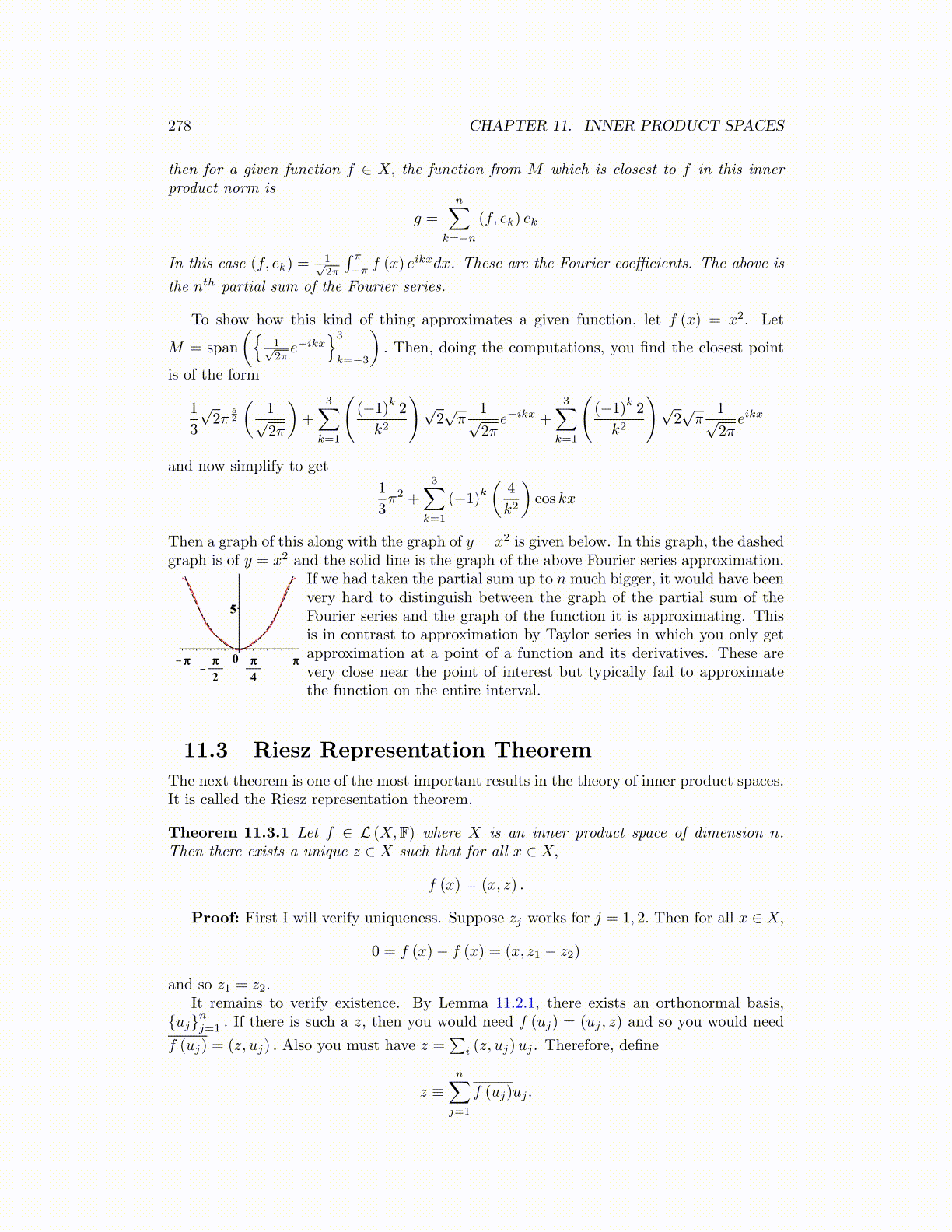
278 CHAPTER 11. INNER PRODUCT SPACES
then for a given function f ∈ X, the function from M which is closest to f in this innerproduct norm is
g =
n∑k=−n
(f, ek) ek
In this case (f, ek) =1√2π
∫ π
−πf (x) eikxdx. These are the Fourier coefficients. The above is
the nth partial sum of the Fourier series.
To show how this kind of thing approximates a given function, let f (x) = x2. Let
M = span
({1√2πe−ikx
}3
k=−3
). Then, doing the computations, you find the closest point
is of the form
1
3
√2π
52
(1√2π
)+
3∑k=1
((−1)
k2
k2
)√2√π
1√2πe−ikx +
3∑k=1
((−1)
k2
k2
)√2√π
1√2πeikx
and now simplify to get
1
3π2 +
3∑k=1
(−1)k
(4
k2
)cos kx
Then a graph of this along with the graph of y = x2 is given below. In this graph, the dashedgraph is of y = x2 and the solid line is the graph of the above Fourier series approximation.
If we had taken the partial sum up to n much bigger, it would have beenvery hard to distinguish between the graph of the partial sum of theFourier series and the graph of the function it is approximating. Thisis in contrast to approximation by Taylor series in which you only getapproximation at a point of a function and its derivatives. These arevery close near the point of interest but typically fail to approximatethe function on the entire interval.
11.3 Riesz Representation Theorem
The next theorem is one of the most important results in the theory of inner product spaces.It is called the Riesz representation theorem.
Theorem 11.3.1 Let f ∈ L (X,F) where X is an inner product space of dimension n.Then there exists a unique z ∈ X such that for all x ∈ X,
f (x) = (x, z) .
Proof: First I will verify uniqueness. Suppose zj works for j = 1, 2. Then for all x ∈ X,
0 = f (x)− f (x) = (x, z1 − z2)
and so z1 = z2.It remains to verify existence. By Lemma 11.2.1, there exists an orthonormal basis,
{uj}nj=1 . If there is such a z, then you would need f (uj) = (uj , z) and so you would need
f (uj) = (z, uj) . Also you must have z =∑
i (z, uj)uj . Therefore, define
z ≡n∑
j=1
f (uj)uj .